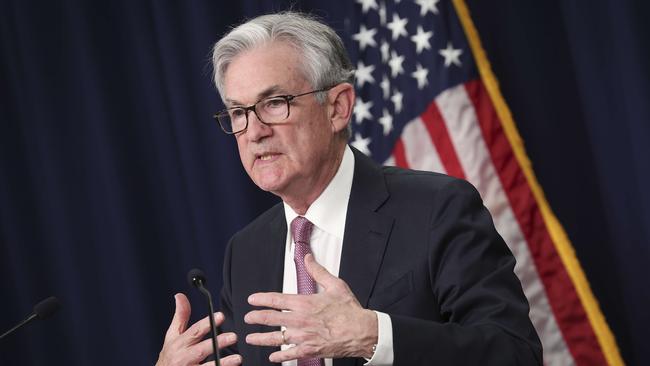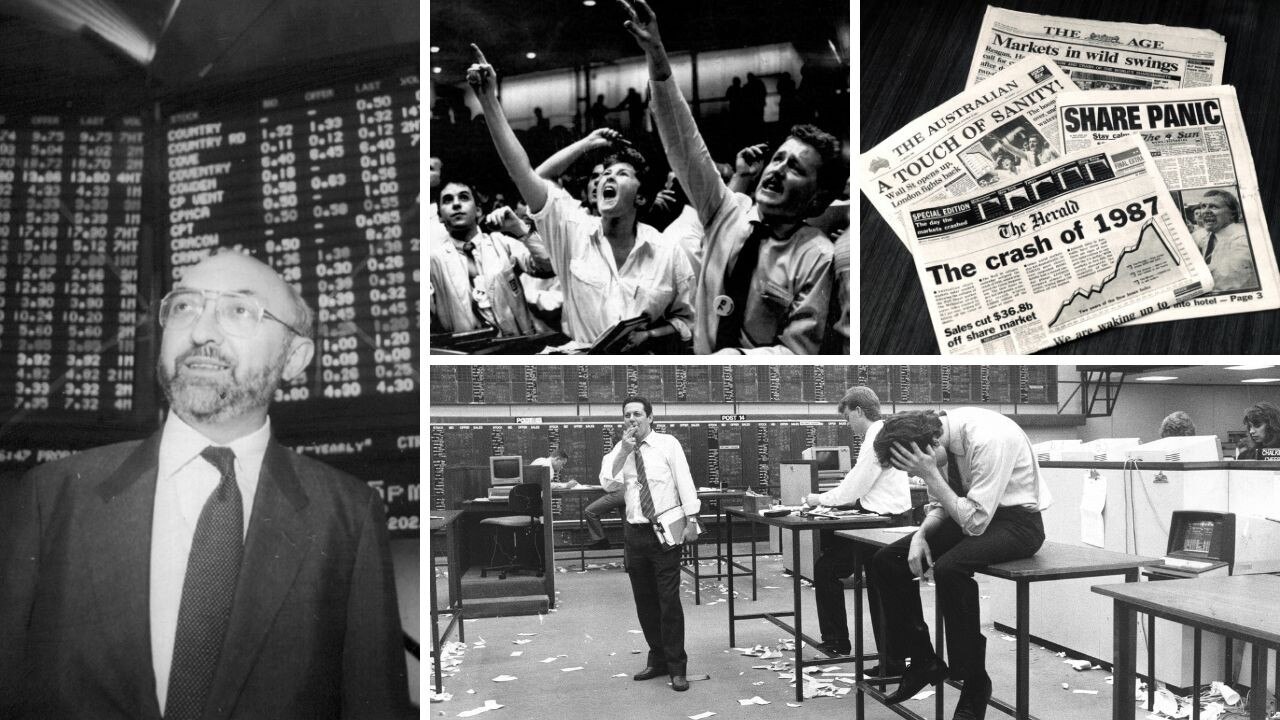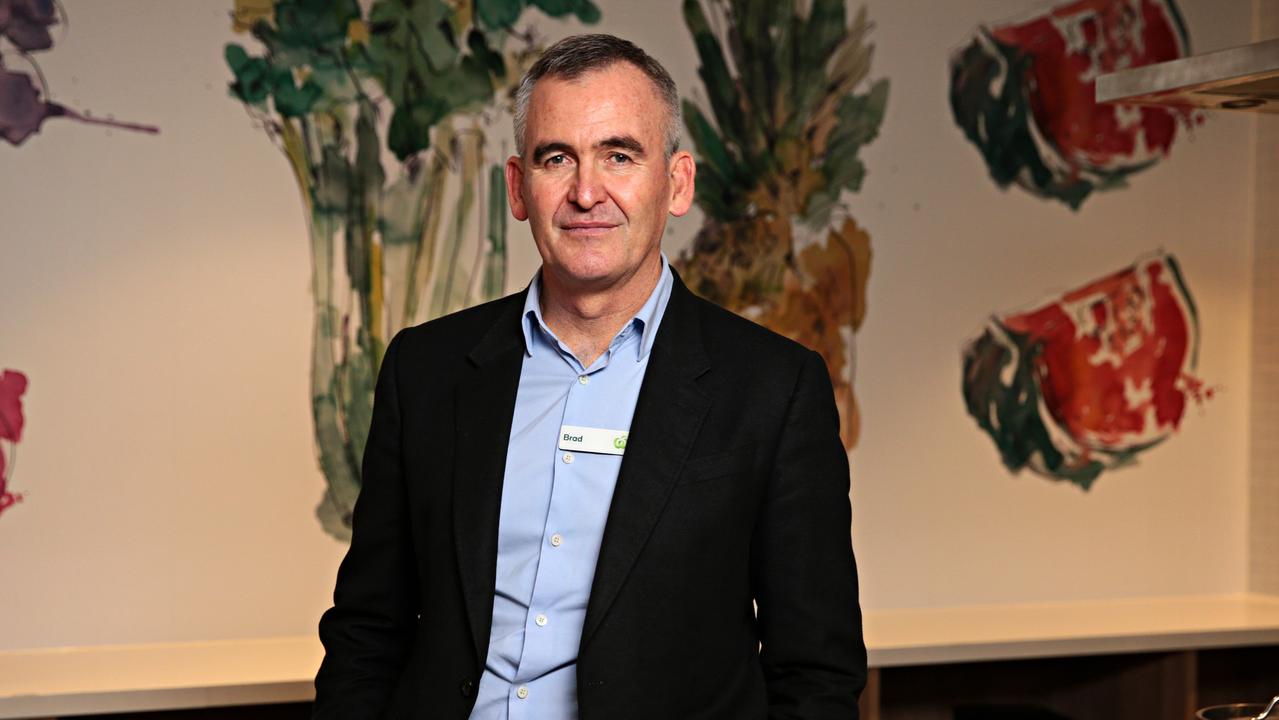As inflation soars, US Federal Reserve still has a way to go
The US central bank needs to stay firm as the markets get testy over rate rises.

Terry McCrann
Don't miss out on the headlines from Terry McCrann. Followed categories will be added to My News.
Perhaps the most instructive message for investors out of the week was what happened on Wall St after the Fed increased its official interest rate – just shy of 40 hours after our Reserve Bank had announced its first rate hike since all the way back in 2010.
Like our RBA, the Fed makes its announcement in the early afternoon when the markets are still open.
Unlike our RBA and its hike, the Fed hike had not only been all-but already “pre-announced”, but indeed Fed head Jerome Powell had also effectively already announced it would be 0.5 per cent not the “normal” 0.25 per cent.
So, what did investors do? In the last two hours of trading remaining they drove the Dow up 800 points.
So, one would conclude, that the hike was regarded on The Street, as something between an unthreatening event and indeed an actually good news story.
Except that is, until we saw what happened the next day, overnight Thursday our time. They promptly sold the Dow down by over 1000 points.
So, on – for want of a better term – “second thoughts”, investors realised that maybe higher interest rates were not so good for the share and bond markets.
This should have been obvious. Rising rates are negative for shares for two reasons.
One, because rising rates will slow the economy. Indeed, that’s their entire purpose; to take some heat out of the economy. And a slower economy must mean lower corporate profits, and so lower share prices than otherwise.
Secondly, higher rates make fixed interest investments relatively more attractive viz-a-viz shares. Again, that’s usually also the precise purpose of rate hikes.
Put the two together and you would think it should have been a no-brainer; and indeed locked into the market well before the actual Fed announcement as there really wasn’t anything surprising for the Fed to announce.
It wasn’t like the Fed “surprised” by delivering only a 25 point hike – or a 100-point one. And there wasn’t some great and disturbing revelation buried in the detail, which took a day to surface.
So what’s instructive? Broadly, the dynamics driving the Fed and Wall St, separately in their zones, so to speak, and the all-critical inter-play between them.
Wall St does not operate in any zone of reason – only greed, moderated from time to time by fear. Big fears like the GFC and (the start of) Covid, and little fears like rate hikes.
But a rate hike, even if fully expected, once delivered is still a rate hike – and even more potently so as one of a series of hikes.
So in its own terms, the initial market reaction on the Wednesday was sort of rational – the Fed didn’t deliver any nasty surprises – given the drop that had already taken place on Wall St.
Then the drop on the Thursday was also rational, in its own space. There are more hikes to come if the Fed’s nerve holds.
So, we are likely to see more of this ratcheting within an overall downward slope, as we’ve been seeing in the run up to the Fed’s first hike in March and subsequently.
The uncertainty is how violent and how – when added up – negative they cumulate to; and then, critically, how the Fed reacts to the market as opposed to be aiming to drive economic outcomes for US inflation, jobs and economic growth.
The overriding message is that the Fed will ultimately “back off”, as it has done at least five times since the mid-1990s, in reaction to the big events like the GFC, and many multiple more tines to market “temper tantrums” along the way.
This is not the Fed of Paul Volcker in the 1970s – nor indeed had been the Fed of all his successors since; that’s a Fed prepared to grind interest rates into the high teens to wring inflation out of the system.
For goodness sake, an official Fed rate which has still to get back to 1 per cent – when inflation is already at 8 per cent and could yet go into double digits – is not “hawkish” in any rational world that I know.
The same goes for our RBA supposedly “turning hawkish” – with just a 25-point hike, taking the rate to 0.35 per cent when annual inflation is above 5 per cent and current inflation (the last two quarters annualised) is pushing 7 per cent.
It’s about as hawkish as a newborn dove.
To quote one C Dundee: you call that a hawkish rate rise?
This – hiking rates by a full 1 per cent, indeed even 2 per cent, as Volcker did in the 1970s and indeed our own RBA did in the 1980s (albeit, pretending not to) – is hawkish.
Or, perhaps more accurately, Keating-ish.
More Coverage
Originally published as As inflation soars, US Federal Reserve still has a way to go




